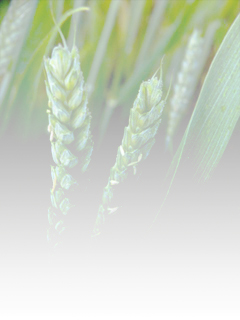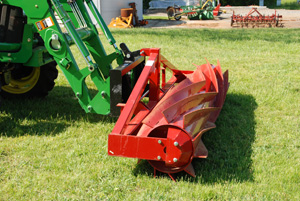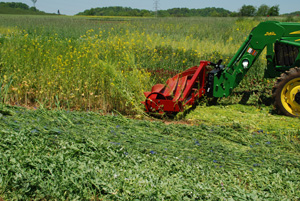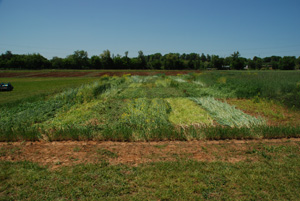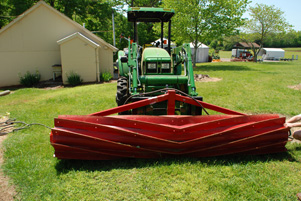Front-Mounted Roller Termination of Cover Crops in No-till Organic Corn Production
(Hugo, Eash, Walker and Smith) |
||
|
Introduction The use of cover crops is a common sustainable agricultural practice in no-till and organic systems. No-till systems rely upon herbicides for cover crop termination and weed control, whereas organic farming mainly uses multiple tillage operations for both cover crop termination and weed control. One possible solution for both management systems is mechanical killing of cover crops, which may provide residue cover and decrease weed competition. In the USA, several mechanical methods for killing cover crops before planting cash crops have been used to a limited extent with new technologies routinely being developed and evaluated. The objective of this study was to determine and compare the effectiveness of different rolling methods in killing cover crops, specifically small grain and legume mixes. The roller crimper offers mechanical control for cover crop kill by rolling and macerating crops to create a thick mat of mulch. The roller used, however, is said to be potentially successful in killing cover crops, but many observations have been made of crops standing up again after rolling. This project tested the observation that tractor speed, down pressure on the loader, and number of passes with the roller crimper might impact cover crop kill, and subsequent corn yield. Oats (Avena sativa L.) and crimson clover (Trifolium incarnatum L.) were used as the cover, and weed suppression in this field was very promising. Corn yield was affected by nutrient deficiency, which will be addressed in future experiments. Treatments examined Down pressure- High or low Tractor speed- Fast (3.5 mph) or slow (2 mph) Number of passes through field-1 to 3 (If more than one pass was required, ideally these would be rolled again the following day or next "good weather" day. Results At the time of planting corn, the chlorophyll index of the rolled cover crop decreased from 155, to 140, to 120 in the order one pass>two passes>three passes, respectively. These results were partly confirmed by percent green measurements, decreasing from 73% to 61% to 55% in the same order, except there was not a significant difference between two and three passes. Similarly, as the number of passes increased, emergence of the corn increased significantly from 15,000 plants/acre for one pass to about 18,000 plants/acre for two and three passes. The only effect of higher rolling speed was an increase in emergence from 16,000 plants/acre to 18,000 plants/acre. The effect of applied pressure resulted in a decrease of the chlorophyll index from 146 to 130 (units), but was no difference in percent green or emergence results. Applied down pressure also had an interactive effect with the number of passes on weed population 5 weeks after planting. As expected with no N fertilizer application, there were no significant differences in weed populations after 7 weeks, nor in corn stand or yield. Conclusion Overall, all treatments gave good results in terms of percent soil cover and weed suppression. These results suggest that the front mounted roller can effectively be used kill mixed cover crops in the southern USA with little benefit from higher speed or pressure applied, and with three passes being unneeded.
|
|


